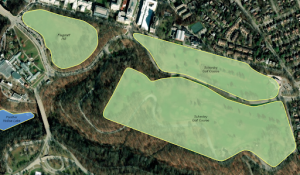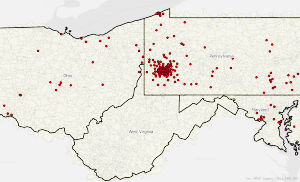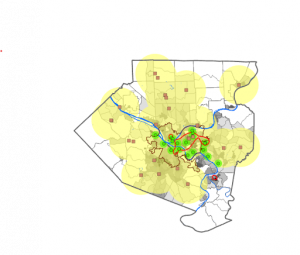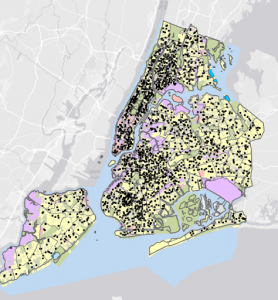Chapter 1:
The book introduces what GIS is and many of its various uses. It offers a good starting point when looking at the analysis side of GIS. It describes how when you are doing analysis, you always start out with a question that guides your process and how you understand the data. To begin this chapter, Mitchell did a great job at laying out all the important steps that go into a GIS inquiry. There are two ways that geographic features can be represented within GIS: vector and raster. In a vector model, each different feature is represented in a row within a table and features shapes that are defined by x,y locations in space. Streams, roads, and pipelines are all things that are commonly represented as a series of coordinates. In the raster model, different features are shown as a matrix of cells based on the original map. Changing the cell size in the model can result in analysis being slower and is not effective for storage. This model is good for showing the different types of features within the area. With both model systems, all data layers should be in the same map projection and coordinate system. When using these models, some attribute values are ratios, amounts, counts, ranks, and categories. Categories are groups of similar things. Counts and amounts both show the total numbers. Ratios show the relationship between 2 quantities and 2 things. Ranks put things in order, from highest to lowest. When working with a data table, three of the most common operations that are performed are selecting, calculating, and summarizing. These all allow the user to interpret the data that’s being analyzed properly.
Chapter 2:
I found that chapter 2 was especially interesting as it highlights how GIS can be used to identify and evaluate cause and effect relationships. I liked learning about the process of collecting and preparing the data that is being analyzed. When assigning geographic coordinates you can use either input a street address or a pair of coordinates. No matter if you are tracking multiple types of data or just one, you can still learn helpful information. GIS is also very helpful as it stores the location of each geographic feature. If you are mapping and have more than seven categories then it is helpful to group some of these categories together to make it easier to effectively visualize the map. The reading offers two examples of maps where one has many categories while the other only has a few groupings. This change is very noticeable with the map with many less categories being much easier to read and observe. When combining categories, it’s important to group them properly so the data can’t be misinterpreted. It is also important to not combine the categories into too few groupings as it might make patterns harder to identify. Overall, this chapter was really helpful in shaping my view of GIS and how the mapping feature works in it.
Chapter 3:
This chapter helped me to understand how GIS operates in terms of statistics. There are three kinds of data that can be mapped: discrete features, continuous phenomena, and summarized area data. Discrete features are individual locations such as linear features or areas. Continuous phenomena are areas or values that are represented as contours, graduated colors, or a 3D perspective. Data summarized by area is usually depicted by shading the area of interest or by using a chart that organizes the data in question. How this data is also important as there are multiple ways of doing so. Some of these options include using points and lines to display the information that is trying to be analyzed. When making a map, it is also very important to know what is your goal with said maps. depending on whether you are trying to explore the data or present the information, your means of doing each could change.





